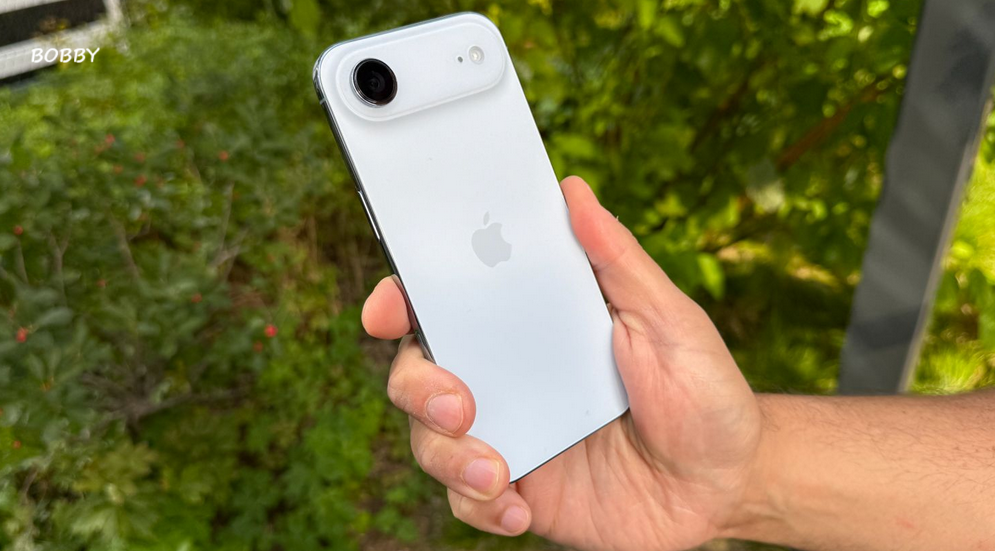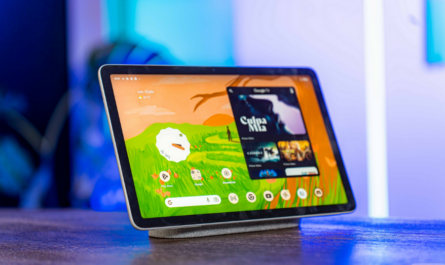After years of upgrading to Apple’s iPhone Pro series, this year I finally decided to take a different route. The newly launched iPhone Air, Apple’s ultra-thin masterpiece, caught my attention immediately. What started as curiosity turned into admiration — the iPhone Air has not only lived up to the hype but has easily exceeded my expectations. However, reports of underwhelming sales and concerning market signals are making me question its long-term future in Apple’s lineup.
The Allure of the iPhone Air
When rumors first surfaced about Apple developing an ultra-thin iPhone, it felt like a breath of fresh air. For years, iPhone designs had evolved gradually, focusing more on performance improvements than radical redesigns. The Pro models, while powerful, felt too familiar year after year.
That’s why the iPhone Air instantly felt different — a futuristic step in Apple’s design philosophy. With its remarkably slim build and lightweight body, the device seemed like a direct evolution from the iconic iPhone X era — bold, sleek, and innovative.
And in daily use, it delivers beautifully. The minimalist design gives it a modern aesthetic, and the comfortable hand feel is unlike any iPhone I’ve owned before. From unboxing it to weeks of usage, it’s been a delight.
Performance and Battery Life Exceed Expectations
One of my biggest concerns before switching from the Pro line was battery performance. I expected that an ultra-thin frame might compromise power capacity — but Apple clearly worked some engineering magic here.
The iPhone Air’s battery life is outstanding. It easily lasts through a full day of heavy use, handling streaming, gaming, and productivity apps without strain. Even after months of use, I haven’t noticed a significant drop in performance or endurance.
Durability has been another pleasant surprise. The frame feels sturdy despite its slim profile, and it has resisted scratches and wear better than I expected. I’ve even dropped it once (accidentally, of course), and it came away without a mark — something my older iPhones couldn’t always boast.
As for the camera setup, I was initially worried about losing the Pro model’s triple-lens system. But in practice, I’ve hardly missed it. The iPhone Air’s dual-camera configuration produces crisp, vibrant images that easily meet the expectations of most users — including casual photographers and social media creators.
Everyone I’ve spoken to who owns an iPhone Air has echoed the same sentiment: it’s one of Apple’s most thoughtfully designed devices in years.
The Concern: Rumors of Weak Sales
Despite glowing user experiences, reports are suggesting that the iPhone Air might not be selling as strongly as expected. Apple has not shared official sales data — and it’s unlikely to do so in the upcoming earnings report — but several market analysts have pointed out softer demand compared to other models in the iPhone 17 lineup.
This raises concerns about the device’s place in Apple’s broader strategy. The Air’s unique appeal lies in its ultra-thin design — a niche that may not resonate with the entire customer base. Many consumers still prefer the larger batteries and multi-lens cameras of the Pro models.
What’s more worrying is a new signal from the industry that mirrors this issue.
Samsung Cancels Its Ultra-Thin Edge Line
Samsung, Apple’s long-standing rival, recently announced that it’s discontinuing its ultra-thin Galaxy Edge line due to disappointing sales. According to leaked sales data, the Galaxy S25 Edge sold just 190,000 units in its first month, reaching only 1.31 million units by August.
In comparison:
-
Galaxy S25: 8.28 million units
-
Galaxy S25 Ultra: 12.18 million units
-
Galaxy S25+: 5.05 million units
Those figures show a clear gap in consumer demand. Samsung’s decision to cancel the Edge series entirely suggests that the market for ultra-thin phones might be smaller than expected.
Does this automatically mean Apple’s iPhone Air is in trouble too? Not necessarily. But when combined with analyst reports of weaker sales, it’s a worrying trend. If Samsung’s exit reflects a broader consumer preference for performance over thinness, Apple might reconsider how much it invests in this design direction.
What’s Next for the iPhone Air?
Current reports indicate that Apple still plans to release an iPhone Air 2 next year, alongside a new foldable iPhone model that could carry the “iPhone Ultra” name.
However, Apple’s plans could easily shift if the iPhone Air doesn’t meet its internal sales benchmarks. While Apple rarely discontinues a product line abruptly, history shows it has no hesitation in pivoting away from designs that underperform commercially.
Personally, I hope the iPhone Air remains part of Apple’s ecosystem. It’s a refreshing departure from the heavier, bulkier phones dominating the market. Its design feels like the direction Apple should be heading — thinner, lighter, and more efficient devices that balance elegance with power.
The iPhone Air represents a fusion of form and function that could redefine the modern smartphone standard. Losing it would be a setback for design innovation.
Why the iPhone Air Deserves to Stay
The iPhone Air fulfills a unique role in Apple’s lineup. It bridges the gap between aesthetic minimalism and everyday functionality. It’s the perfect device for users who value portability and design sophistication over having every pro-level feature.
Its thinness doesn’t compromise usability; instead, it enhances it. Typing, browsing, and gaming all feel more natural due to its reduced weight and improved ergonomics. Even accessories — like the MagSafe Car Mount, AirPods Pro 3, or AirTag 4-pack — seem to integrate more seamlessly with it.
If Apple can maintain strong performance, durability, and camera quality in this slim form factor, the iPhone Air could easily become a long-term favorite for users who want a premium experience without the heft.
Final Thoughts
The iPhone Air has proven to be one of Apple’s most remarkable products in recent years. It’s bold, futuristic, and incredibly well-engineered. Yet, market performance might not reflect its excellence.
If weak sales persist, Apple could potentially scale back production or even discontinue the line. That would be unfortunate — because for many of us, the iPhone Air feels like the ideal blend of innovation and elegance.
I truly hope Apple keeps refining this concept, giving the Air series a chance to mature and win over more users. The future of smartphones deserves devices like this — light, efficient, and beautifully crafted.
So, what do you think? Does the iPhone Air deserve a bright future in Apple’s lineup, or is it destined to fade away like Samsung’s Edge?
✅ Best Accessories for iPhone Air:
-
AirPods Pro 3
-
MagSafe Car Mount
-
AirTag 4-Pack (now $65, down from $99)
-
10-year AirTag battery case
-
100W USB-C fast charging power adapter




